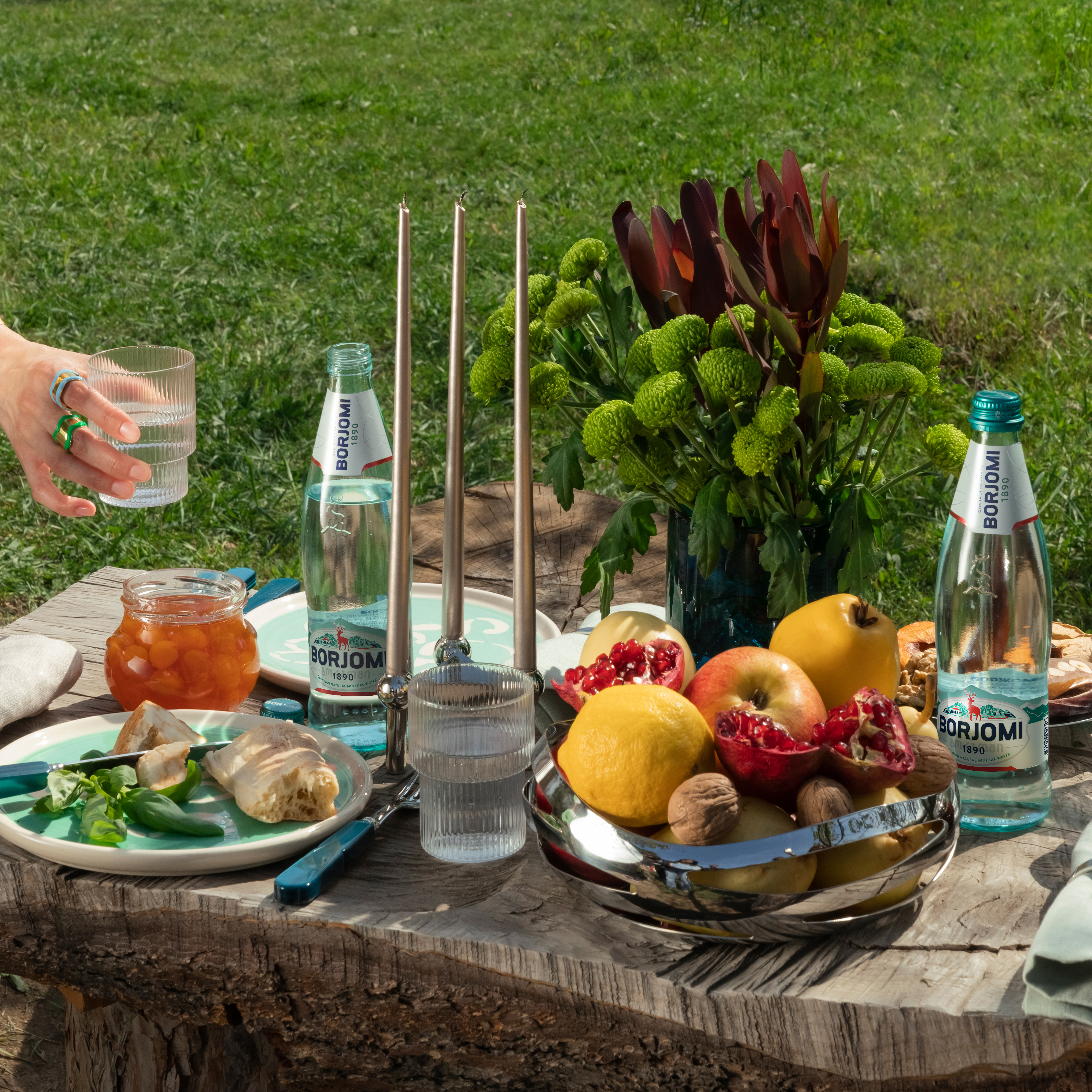
Combination of Borjomi and food
Combining different dishes and drinks requires not only creativity, but also a scientific approach. Just as, for example, in the case of wine, mixing mineral water also requires knowledge, and even various small temperature manipulations carried out on mineral water - completely change your experience.
Mineral water prepares your taste buds for each subsequent bite. Instead of neutralizing or overshadowing the taste of the dish, it helps you to better feel its taste and aroma. However, different types of water should be added to each dish.

Let's start from the beginning:
There are several types of water: STILL - still water;
LIGHT- lightly carbonated water;
EFFERVESCENT - a category between non-carbonated and light, characterized by the minimum possible number of bubbles that are almost imperceptible;
Classic - water with the degree of carbonation that most people imagine when they think of mineral water. Many well-known, mineral-rich carbonated drinks belong to this category, including Borjomi;
Bold - characterized by the largest size, loud bubbles. When people say that they don't like carbonated drinks, they usually mean this category of mineral drinks.
In addition to gasification, there are other characteristics of water: mineralization, PH factor, youthfulness and many others.
And now - Borjomi is in front of you! Juvenile water with a 130-year history, which flows from volcanic rocks at a depth of 8000 meters and is enriched with more than 60 elements along the way.

Probably very few people imagine that the combination of drinking water and food also has its own etiquette.
For example, depending on the carbonation and PH, Borjomi goes well with shrimp and fried chicken. According to gasification and mineralization - grilled lamb meat.
And, according to gasification, it is most suitable for turkey meat and grilled beef. If you decide to eat fish and mussels, be sure to include Borjomi, because its acid-alkaline balance perfectly combines with these two dishes.
However, you should also keep in mind that when you drink water with food and wine, the rules of the game change a bit. In this case, water should be matched with wine and food so that there is harmony between them and not competition.
This knowledge became especially necessary after Borjomi took an irreplaceable place on the Georgian table. It is important to know how to combine the three treasures of the Georgian table: dishes, wine and Borjomi.
If you have combined wine and food correctly, it is acceptable to drink only still water. However, in the case of white and red wine, there is a small difference:
It is better to mix water with low mineral content and neutral ph with white wine. In case of red wine - medium or high mineral content and neutral Ph. Borjomi goes especially well with red wine, although it obviously does not come into conflict with white wine either.

For centuries, people have consumed water at its natural temperature. In the case of wine, almost all cellars are kept at 13°C, although champagne is often chilled to 6°C, and some wines are even served at 18°C. These manipulations are used to enhance the taste of wine.
The annual temperature of many springs is exactly 13°C. This similarity is probably because the cellar is located underground and water flows from underground.
In general, you can serve water at virtually any temperature, but if you know how to adjust the temperature of the water, you will be better able to match your drink and food. For example, rising temperatures have a dampening effect on water with bold, large and loud bubbles, and the colder the water, the more concentrated it is.
As you can see, thanks to its unique composition, Borjomi is not just a drink, but a culinary partner of your meal. Taking into account the compatibility of Borjomi and dishes will take your gastronomic experience to a completely different level.